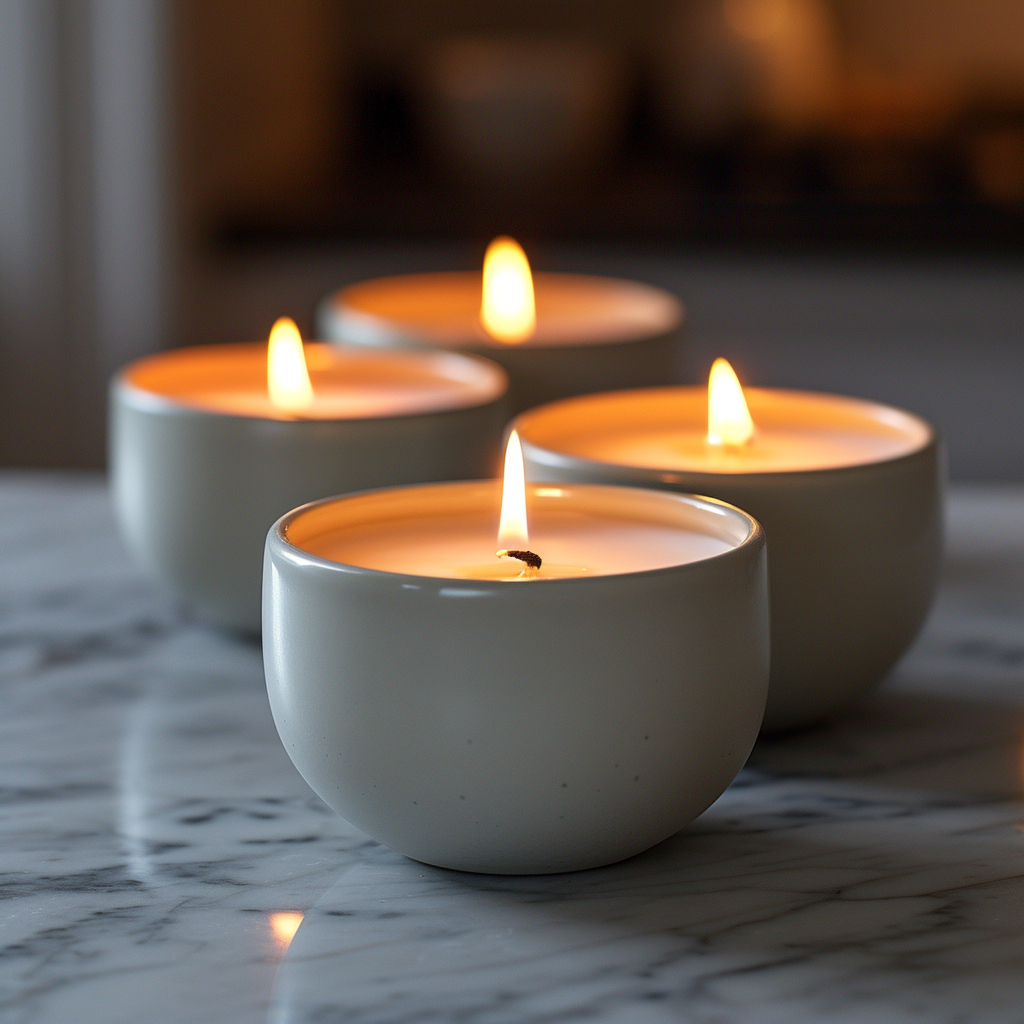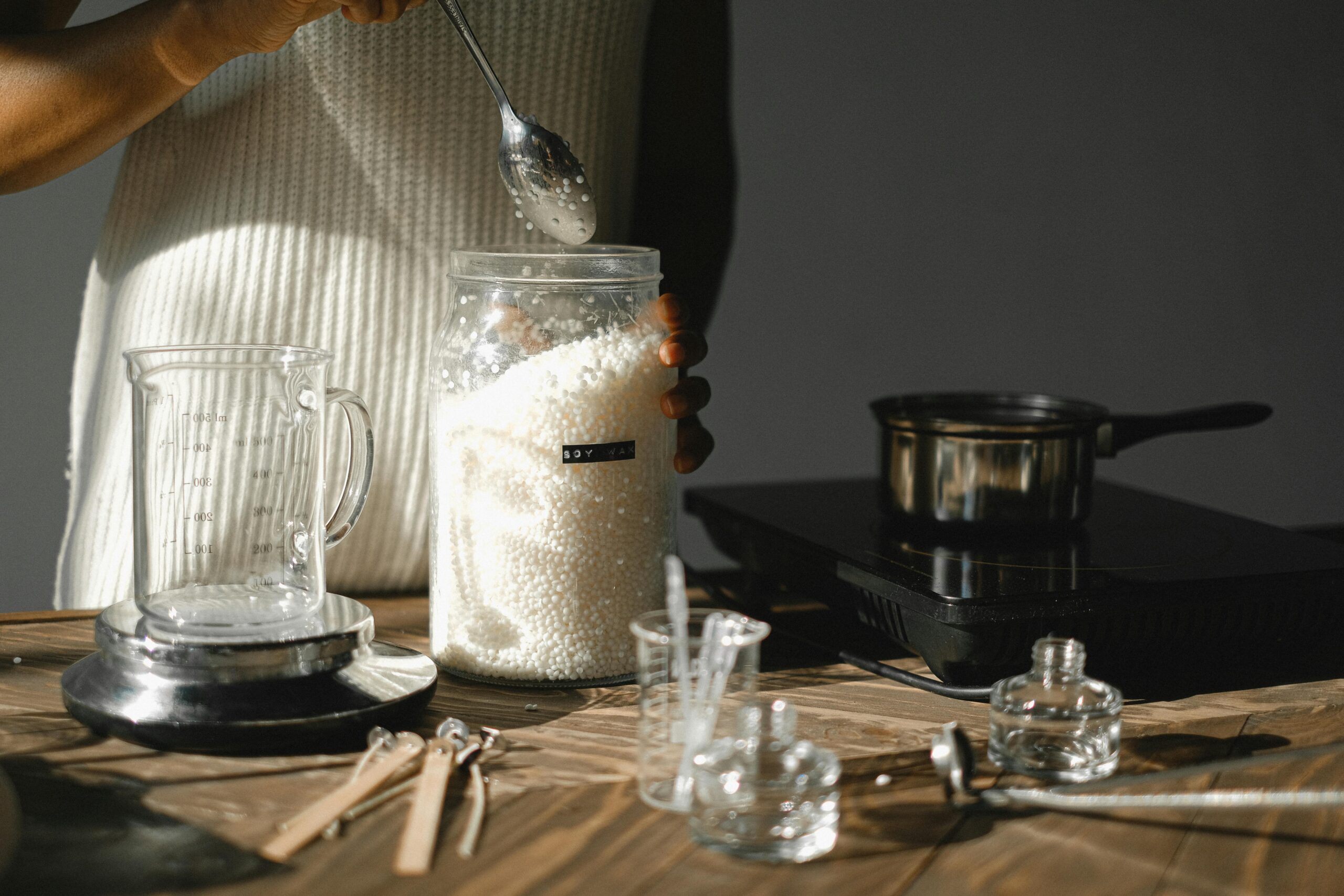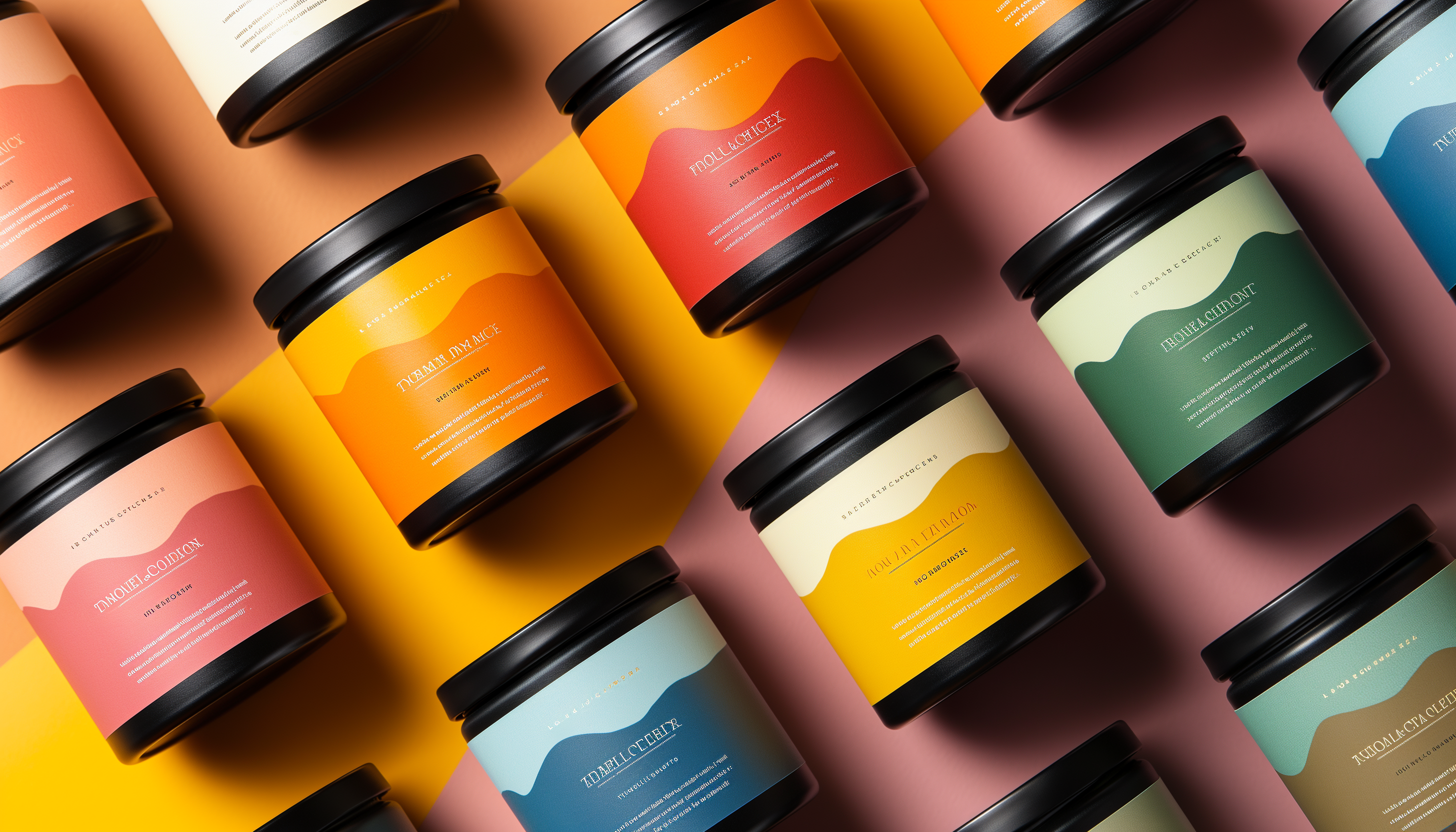When creating high-quality candles, selecting the right type of wax is crucial. The choice of wax affects the candle’s burn time, scent throw, appearance, and environmental impact. With a variety of options on the market, from natural soy wax to traditional paraffin, making the right decision can be challenging. This article provides an in-depth look at eight common candle waxes, helping you find the best option for your brand’s specific needs.
Key Factors to Consider When Choosing Candle Wax
Before diving into the specifics of each wax type, it’s important to consider several factors that will influence your choice:
- Sustainability: Is the wax eco-friendly and renewable?
- Burn Time: How long will the candle burn?
- Scent Throw: How well does the wax retain and release fragrance?
- Cost: What are the material and production costs?
- Visual Appeal: Does the wax create the desired look, such as smooth surfaces or unique textures?
Eight Types of Candle Wax: A Detailed Comparison
1. Soy Wax
Soy wax is a popular natural, renewable option made from soybean oil. It offers a clean burn and has a longer burn time compared to paraffin. It is biodegradable and eco-friendly, making it ideal for brands that focus on sustainability. However, soy wax has a weaker scent throw compared to other waxes, and it is relatively more expensive.
2. Beeswax
Beeswax is a luxurious natural wax known for its air-purifying properties. When burned, it releases negative ions that help eliminate pollutants from the air. Beeswax has a subtle, natural scent and a long burn time, making it suitable for premium candles. Due to its higher cost and limited availability, it is often used by high-end brands.
3. Paraffin Wax
Paraffin is the most widely used candle wax due to its affordability and excellent scent throw. As a petroleum by-product, paraffin burns efficiently but is non-renewable, leading to concerns about its environmental impact. Paraffin is ideal for large-scale production where cost is a key factor.
4. Coconut Wax
Coconut wax is a natural and sustainable option with superior scent throw and a creamy texture. It burns cleanly and is often blended with other waxes to enhance performance. However, coconut wax is more expensive, making it better suited for premium and boutique brands.
5. Palm Wax
Palm wax is known for its crystallized texture, which creates an attractive aesthetic for candles. It is a renewable resource but can have negative environmental impacts if not sourced responsibly. Brands focused on aesthetics may find palm wax appealing, but sustainability should be a key consideration.
6. Gel Wax
Gel wax, made from mineral oil and polymer resin, is transparent, making it ideal for decorative candles. It burns longer than other waxes but holds less fragrance. Due to its unique visual effect, it is best for novelty or decorative candles rather than functional, highly fragrant ones.
7. Rapeseed Wax
Rapeseed wax is a renewable and eco-friendly wax, commonly produced in Europe. It burns at a lower temperature and has a clean burn, making it a sustainable choice for environmentally conscious brands. It also has a soft texture and is biodegradable.
8. Coconut-Soy Blend
This blend combines the benefits of coconut and soy wax, offering a natural and sustainable product with strong scent throw and a smooth texture. The combination is ideal for brands that want to provide an eco-friendly yet premium candle. However, it comes at a higher cost than traditional waxes.
Comparison of Candle Wax Types
| Wax Type | Sustainability | Burn Time | Scent Throw | Cost | Visual Appeal |
|---|---|---|---|---|---|
| Soy Wax | High | Long | Moderate | Moderate | Smooth, natural look |
| Beeswax | High | Long | Subtle | High | Natural golden color |
| Paraffin Wax | Low | Moderate | Strong | Low | Traditional appearance |
| Coconut Wax | High | Long | Strong | High | Smooth and creamy texture |
| Palm Wax | Moderate | Long | Moderate | Moderate | Crystallized texture |
| Gel Wax | Low | Very Long | Low | Moderate | Transparent, decorative |
| Rapeseed Wax | High | Moderate | Moderate | Moderate | Soft, smooth texture |
| Coconut-Soy Blend | High | Long | Strong | High | Premium smooth finish |

How to Choose the Best Wax for Your Brand
When deciding which wax is best for your brand, consider these key points:
- Brand Positioning: Are you targeting eco-conscious consumers or luxury buyers? For sustainable brands, soy, rapeseed, or coconut wax are excellent choices. For luxury markets, beeswax or a coconut-soy blend may be ideal.
- Product Purpose: Decorative candles may benefit from gel or palm wax for their unique visual appeal, while functional candles may prioritize burn time and scent throw with paraffin or coconut wax.
- Cost Considerations: If cost is a major concern, paraffin wax remains the most affordable, while coconut, beeswax, and blended waxes offer higher performance but at a higher price point.
By aligning your wax choice with your brand’s identity and your customers’ expectations, you can create candles that not only perform well but also resonate with your target market.
Conclusion
Selecting the right wax for your candle brand is essential to creating products that align with your values and meet customer expectations. Each wax type, from eco-friendly soy and rapeseed to luxurious beeswax, offers unique advantages. By carefully considering factors like sustainability, scent throw, and cost, you can make an informed decision that will enhance your brand’s offerings and appeal to your market.


